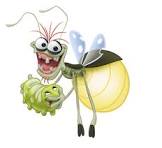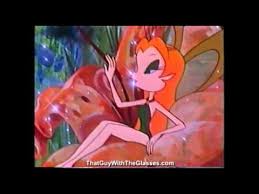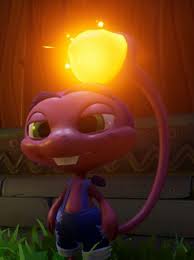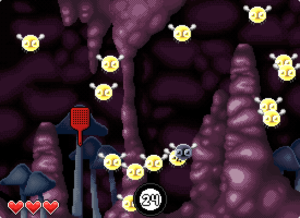“Aren’t you hungry?”
Directed by I. Freleng; Story by Tedd Pierce; Animation by Virgil Ross; Musical Direction by Carl W. Stalling. A Merrie Melody released on March 24, 1945.
Some sort of domestic squabble is going on in a birdcage, and I’m proven right by one of the occupants being evicted. He tells us that he is a lovebird, that was his wife who hates his guts now, and as his name suggests, he needs love to live. No point in suffering. He begins brainstorming some ideas about how to off himself. I’m sure some people would think he’s overreacting, but I think it’s kinda sweet that he is dedicated to the one he loves if she wasn’t. If I ever lost a girlfriend, I’m sure I wouldn’t find life too enjoyable anymore, either. Me and him should be drinking buddies.
Fate decides his death for him with a cat who looks like he’s in the mood for a snack, seeing as he’s picking through the trash. This cat is Sylvester making his first appearance. And he rushes over once the bird gets his attention. He stops short because this seems too good to be true. He deduces that the bird is poisoned and just wants one less cat in the world. Because that’s what poisonous creatures want right? No point in living if you can’t ever be hugged. (On another note, pay attention to the speck of background between Mr. Lovebird’s wing and head. It’s also depressed as it turns blue.)
Sylvester’s owner calls him back for some milk. Wait, why was he picking through the trash if someone feeds him? (On another note, if you watch his face closely, you’ll see it has more white than usual as he zips into frame.) He spits out every drop once he finds out who was at the bottom of the bowl. Since Sylvester is paranoid and Mr. Lovebird isn’t going to explain why he’s come to the worst life choice possible, he has no choice but to order a mallet, smack the cat, then enter his mouth whilst he shouts.
Sylvester smokes a pipe to get him back out. (Hey, if you want to die so much, why don’t you just inhale that smoke that’s being inhaled. That secondhand stuff is deadly.) He traps Mr. L in a glass jug, and proceeds to open some cat food. (Does he normally feed himself? He’s really well trained!) Whilst his head is turned, a very familiar looking feather drops into the bowl. Not daring to not look behind him, Sylvester doesn’t notice until it’s sticking out of his mouth. His worst fears are confirmed upon checking on the jug. He ate the dirty birdty!
Mr. L is okay though. This is all part of his master scheme: give Sylvester some pills, and hop on the spoon himself before it goes past the gums. Sylvester catches on. The bird decides to play fowl. He turns the radio to some sort of program that does nothing but ask if you’d like to eat this’nthat or so’nso. (Or it’s an ad.) To make things harder, Mr. L also shows plenty of pictures of delicious looking meals. The torture is working. (Do those fish have hair on them?) Sylvester soon gives in figuring if doesn’t kill him, spending the rest of his life starving will. I’d say that adds up. Just before the deed is done, a telegram is delivered to the bird.
Whatever it said, it worked like a charm. Mr. L tells Sylvester that things will be all right back at home, so he doesn’t have to eat him. (On another note, his beak turns blue because it’s still depressed.) Too bad his treatment worked so well! Sylvester is still hungry and this bird on his had is worth two in any bush. The lovebird just barely manages to escape with his life. (Now, aren’t you ashamed you took it for granted?) So what was on that note, anyway? Has the Mrs. forgiven you for whatever she did? Better than that! She’s going to go live with her mother. Oh, Mr. Lovebird. Here I thought you were a decent sort when you were in a right state of mind.
Well, you know what fickle creatures lovebirds are. Sweetiepuss changed her mind last minute, and Mr. L resumes his Sylvester chase. Since the little guy never made another appearance, I think he succeeded.
Favorite Part: One of the ways Mr. L tries to get Sylvester to eat is by dressing as Santa. His pathetic “Merry Christmas” is music to my ears.
Personal Rating: 3. A fine way to start a new character off. Good enough to be nominated for the Oscar too! But since it was the forties, you already know it lost to a Tom and Jerry.






